 Back to the Be Inspired Blog
Back to the Be Inspired Blog
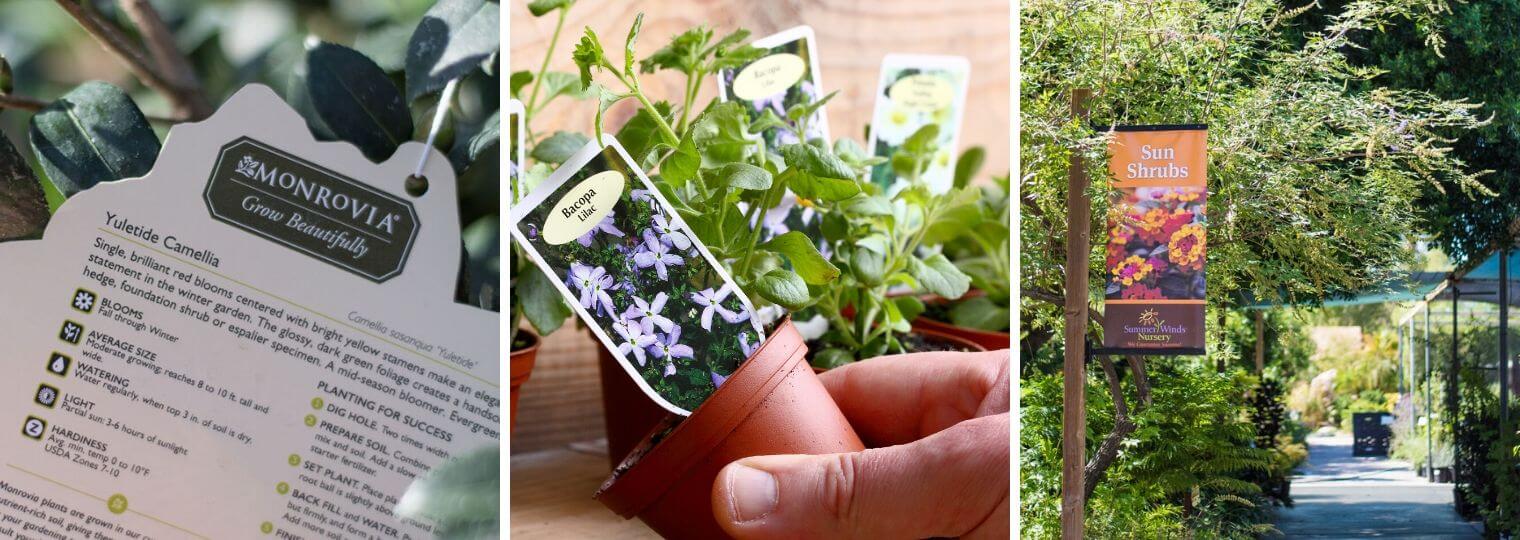
Not Everything You Need To Know About Plant Care Comes On The Tag
Think back to the last time you bought a plant from a nursery. Did you look closely at the plastic plant care tag that was stuck haphazardly into the dirt? Or did you just pull it out (if it even had one) and toss it aside?
Especially for experienced gardeners, it can be easy to simply throw the plant information tag away. But even if it’s a species you’ve had success with before, new varieties are popping up all the time and their needs can vary wildly. Here’s how to use the plant care tag to your advantage – and why it can be worth it to take a little extra time to do some research of your own or to ask one of our Trusted Garden Advisors for their care recommendations.
The Plant Care Tag Gives You A Name
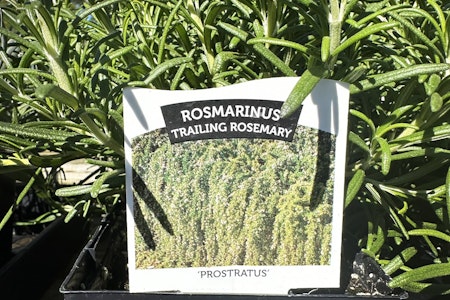
Almost every plant care tag will include both the common and botanical names for your plant. When you look at the Latin (botanical) name on the plant tag, you know exactly what you’re buying. The first word in the plant name is for the genus, and the second is the species which can vary drastically in color, size and shape from other plants in its group.
The Plant Care Tag Has Planting Tips
If you’ve ever brought a plant home from the nursery only to have it wilt despite your best efforts, you’re familiar with the idea that what works for one plant won’t work for others. Planting tips on the tag are general recommendations. However, we recommend speaking with one of our Trusted Garden Advisors for local planting recommendations, including ensuring your plant’s success from the beginning with a fertilizer such as E.B. Stone Organics Sure Start or a fertilizer designed for the specific type of plant you’re purchasing.
Lighting Conditions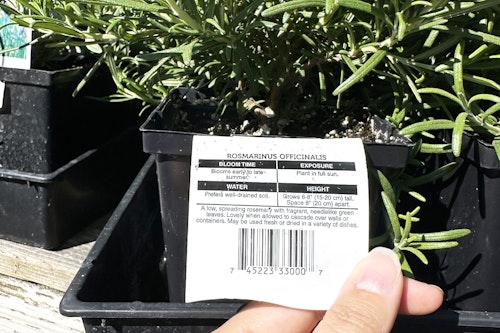
Different plants prefer different levels of sunlight exposure. While most ferns are too delicate to thrive in a sunny place there are some varieties that do quite well in the sun as long as their soil stays moist. Coneflowers and other daisy-like plants need hot temperatures and bright sun to look their best. A plant care tag will give you general lighting recommendations for that plant.
Here are some helpful definitions:
- Full Sun – at least six hours of direct, unfiltered sunlight a day. Full sun can also be referred to as “afternoon sun,” since that’s when the sun is hottest and highest.
- Partial Sun – three hours of direct sunlight, or roughly half of “full sun.” Partial sun, sometimes alternately listed as “partial shade,” can also be referred to as “morning sun.”
- Full Shade – plants that require shade are often too delicate to tolerate the heat, and need moist roots to thrive. Full shade plants should get less than three hours of direct sunlight, if any.
Here’s where it gets tricky and our Trusted Garden Advisors can help. While you would think that plant care tags are regional and made for the climate in which the plant is purchased they are not. They are general care tags that plant growers create—they are NOT regional. Therefore, while a tag may recommend full sun, you may live in an area where that plant would thrive with partial sun and wilt with full sun. When you purchase your plants, speak with one of our associates to learn more. You can even use a marker to update your plant care tag with their local recommendations for success. Keep your eye out for our nursery signage to help identify local lighting requirements.
Watering Needs
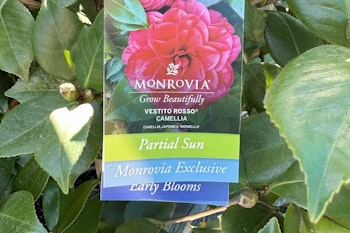
This is especially important because while some plants prefer to keep their feet wet, others hate feeling soggy and will quickly drown. Some plant care tags will give you clear watering directions like “twice weekly” or “keep soil moist,” while others use a series of raindrops:
- One drop – let the soil dry out between watering
- Two drops – water when soil is dry to a depth of one inch deep
- Three drops – soil should feel moist to the touch at all times
If the care recommendations are for a time frequency, that timeframe may need to be adjusted seasonally so that the plant isn’t unnecessarily too dry or moist.
Size and Shape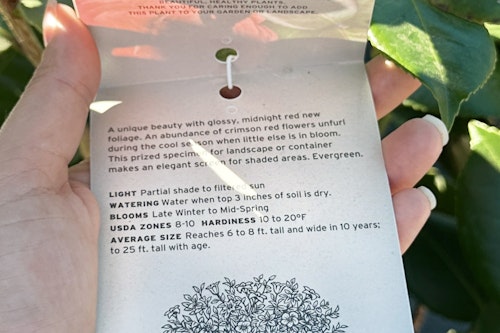
Some plant care tags will let you know how high or wide a plant can be when it reaches maturity. This is important information when determining how far apart to space your plants to avoid crowding and stunted growth. You also want to plant your garden so that nothing is being shaded out because of an overly-tall neighbor. Even though you may want your garden to appear full right away, remember yout plant will thrive when spaced according to the label’s recommendations and the plant’s maturity size.
Hardiness Zones
Many plant care tags will include a plant’s hardiness zone. Plants are rated according to the USDA Hardiness Zones, which is based on the minimum winter temperature they can survive. Hardiness zones are specific almost city by city, depending on your geography, and should be considered carefully when selecting plants. Simply because a plant has been shipped and stocked at your local nursery doesn’t mean it will be a perfect fit for your hardiness zone – even more so if you have to travel some distance between the nursery and your home.While we source as many of our plants as we can locally, some plants may require additional care in the winter to stay warm, for example.
Special Features
Finally, if the plant care tag has any room left it may include information on wildlife and its interaction with it. For instance, certain flowering plants are known to attract pollinators, while others are resistant to grazers like deer and rabbits. This information is correct regardless of where the plant is purchased.
Talk To The Experts At SummerWinds
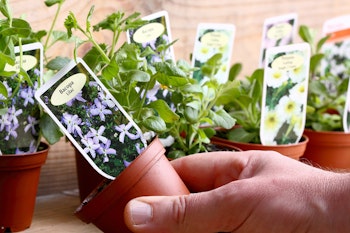
The next time you’re browsing our aisles, feel free to ask our gardening experts for help deciphering the information on any of the plant care tags. We’re more than happy to help you determine which plants are right for your yard, and make suggestions on successful combinations and local care requirements.
If you have questions about houseplant care, check out our blog, “Houseplants Add Color and Texture to Your Home.” Unless you live in a particularly hot or humid area, the care recommendations on houseplant tags are generally accurate.

